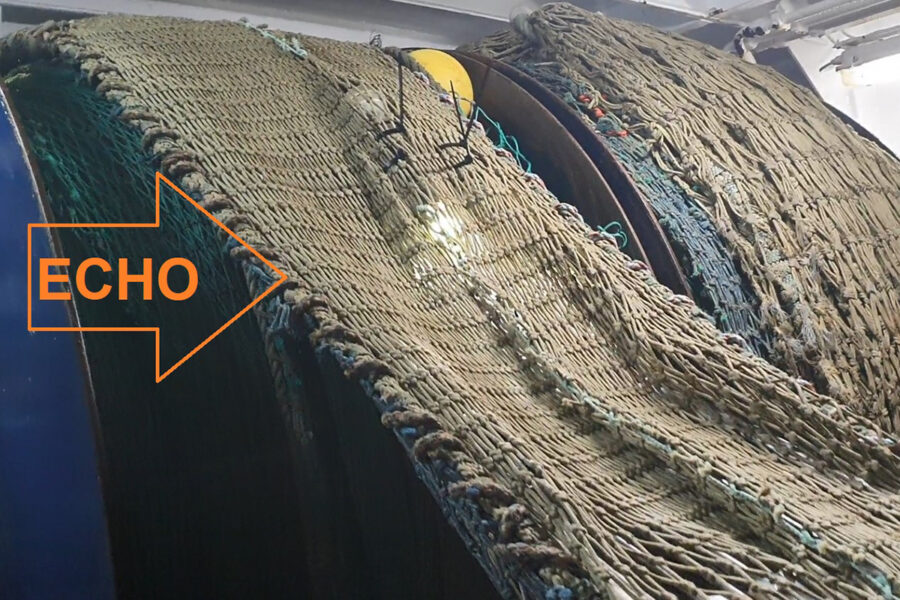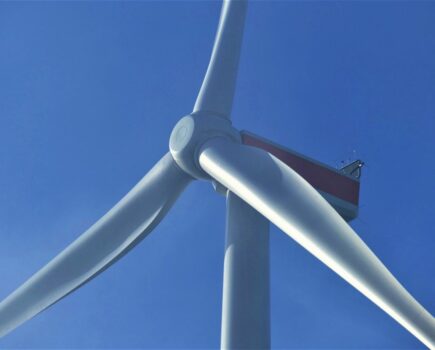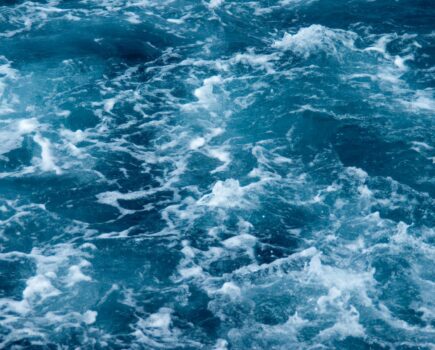One of the finalists in the Product of the Year category in this year’s Fishing News Awards can boast the potential for huge fuel savings over the course of a year. The Notus Echo will produce these savings by helping owners to spend less actual time fishing in order to achieve the same level of catches.
The concept of the Echo is quite simple, Fran West, managing director of Fraserburgh company Seafield Navigation told Fishing News – but turning the concept into a workable and durable piece of equipment took a bit more work.
“First developed in Canada, the Echo simply listens to the distinct sound that crustaceans make when hitting a small grid fitted into the tunnel. Currently, skippers are fishing blind. Until now, prawns cannot be detected with any shipboard or trawl-mounted sounders or sonars.
“The key to turning the concept into a workable reality has involved a number of different factors – fine-tuning the recorder, linking this to an appropriate charting system, and developing a physical structure that can work with a standard Nephrops trawl and doesn’t impact on any bycatch of fish. The grid can be wound onto a standard net drum without any issues – which was vital if this is to become an everyday piece of equipment.
“The Echo consists of a sensor in the trawl communicating wirelessly to a hydrophone mounted in the vessel. Echo listens for prawns hitting the pick-up device.
“The data suggests prawns congregate in ‘hives’. You are catching when going through the hives; the rest of the tow, you are probably only catching water! Analysis of Echo data indicated that on one five-hour tow, the vessel was only actually catching prawns for 40 minutes.”
The initial trials were undertaken on the 24m twin- rigger Favonius, fishing out of Peterhead, skippered by Andrew Buchan. Results, he said, were very promising. In the wheelhouse, the information is graphed. The results showed that on this tow the ‘hotspot’ was at the beginning of the tow, with catches dropping off dramatically as the tow went on.
Fran West told FN: “The key to this, as with any new innovation, is to make it straightforward and simple for a skipper to use. Using feedback from the trials onboard Favonius, we developed an ‘Echo discriminator’ in the boat’s Easywin/Turbowin plotter software. This gives a simple colour-coded track based on the Echo pick-up response fed from the Notus Trawlmaster system.
“We could clearly see the prawn hotspots appearing in the trawl – the hives were just a few hundred metres across. Re-fishing the detected hives gave the same prawn catch for a 1.5-hour tow as the 4.5-hour preliminary tow.”
The Echo technology has also been evaluated by BIM in Ireland. The author noted: “A review of underwater camera footage after this haul showed a relatively high number of Nephrops… suggesting that the Echo system was working well.”
Fran West added: “Any increase in catch rates has to be helpful, particularly with record high fuel prices. However, I see it as going much further than simply saving costs. It is inevitable that further pressure will come on the industry to reduce impact, particularly on non-target species and habitats.
“I can see a time when this type of kit is standard across industry, and where, as a whole, we are maintaining current levels of catches, but with a reduction of 50% or more in fuel bills, and the amount of ground actually swept by trawls. That is quite a staggering improvement really, and one that can only be welcomed across the board.”
A short video showing the operation of the grid onboard the Favonius can be found here…
This story was taken from the latest issue of Fishing News. For more up-to-date and in-depth reports on the UK and Irish commercial fishing sector, subscribe to Fishing News here or buy the latest single issue for just £3.30 here.








